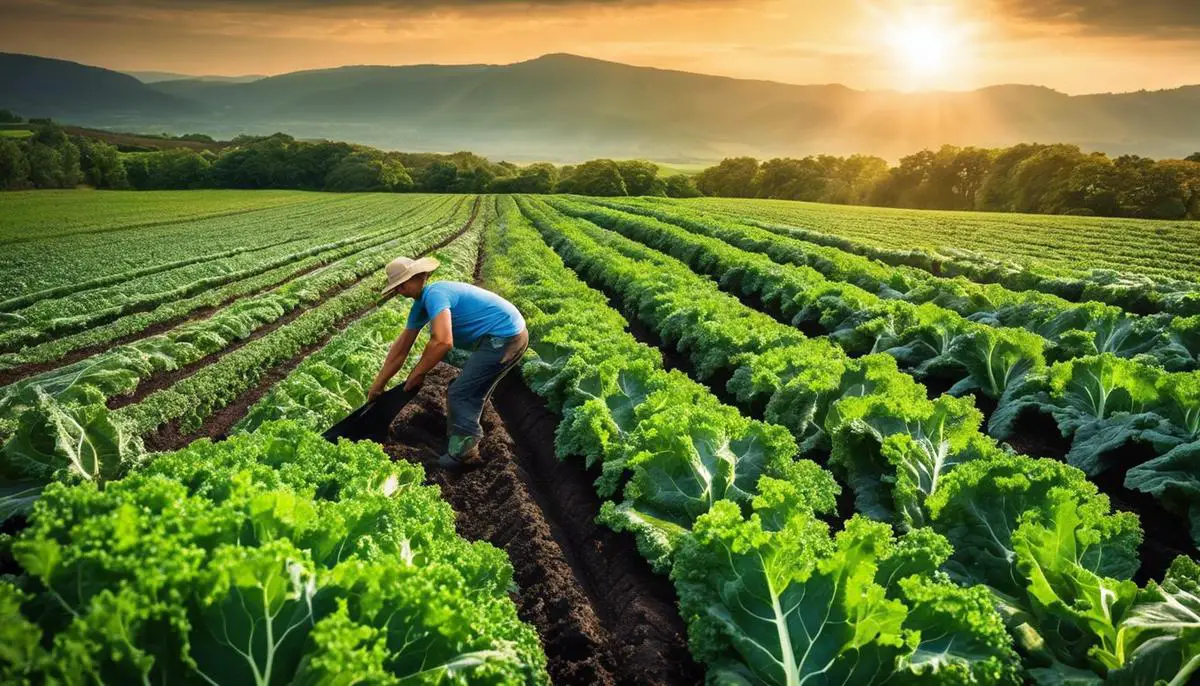The quest for healthier dietary choices has led to an upsurge in the popularity of organic vegetables, with kale emerging as a superstar among leafy greens for its nutrient richness and versatile culinary applications. Understanding organic kale cultivation is integral to fostering sustainable agricultural practices that meet the burgeoning demand. This essay provides an intricate look at the multifaceted approach needed for successful organic kale production, offering insights into the symbiotic relationship between plant health and soil vitality, innovative strategies for natural pest and disease mitigation, attentive harvesting techniques, and the comprehensive processes that underpin organic certification and marketing. With a focus on soil management, pest control, harvesting, and marketability, we aim to educate on the essentials of thriving in the realm of organic kale agriculture.
Soil Fertility and Management in Organic Kale Production
The Integral Role of Soil Composition and Management in Boosting Organic Kale Yield
Soil composition and management are foundational to the cultivation of organic kale, a nutrient-dense leafy green that has risen in popularity due to its health benefits. Understanding the intricacies of soil structure, nutrient availability, pH balance, and organic matter content is essential for optimizing the yield of organic kale crops.
Reader Poll: What online courses would interest you?
Kale, being a hardy and versatile crop, still requires a soil rich in organic matter to thrive. The presence of organic matter improves soil structure, which in turn influences the soil’s ability to retain water and nutrients. This retention is critical, as kale requires a steady supply of moisture and nutrients throughout its growth cycle. Well-structured soil also encourages a robust root system, enabling kale plants to access the resources necessary for vigorous growth.
The nutrient profile of soil is paramount in yielding a successful kale harvest. Kale demands a well-balanced supply of nitrogen, phosphorus, and potassium — the primary nutrients. Nitrogen is particularly crucial for the development of healthy, green leaves, a hallmark of quality kale. Organic fertilizers, such as composted manure or vegetable scraps, can be introduced to ensure an adequate nutrient supply without resorting to synthetic alternatives that are not permitted in organic farming.
pH balance, the measure of acidity or alkalinity of soil, has a profound impact on nutrient uptake by kale plants. Kale prefers slightly acidic to neutral soil, with an optimal pH range between 6.0 and 7.0. Regular soil testing and amendments like lime or sulfur can adjust the pH to fall within this favorable range, thus enhancing nutrient availability and uptake.
Subscribe to our newsletter!
Soil management practices encompass a wide array of techniques, including crop rotation, cover cropping, and minimal tillage. These practices maintain or improve soil health, manage pests and diseases, and ultimately contribute to increased organic kale yields. Crop rotation, for example, reduces the likelihood of pest and disease carryover by alternating kale with other crops. Cover crops, such as clover or rye, can be planted off-season to protect and enrich the soil with organic matter and nitrogen. Minimal tillage preserves the soil structure, reduces erosion, and helps maintain the delicate ecosystem within the soil.
In conclusion, the meticulous management of soil through the maintenance of organic matter, careful nutrient supplementation, pH adjustment, and adoption of sustainable cultivation practices is paramount in maximizing organic kale yields. Continual research and application of these principles play a significant role in the success of organic kale farming, providing nutritious produce that supports the well-being of consumers and the health of the planet.
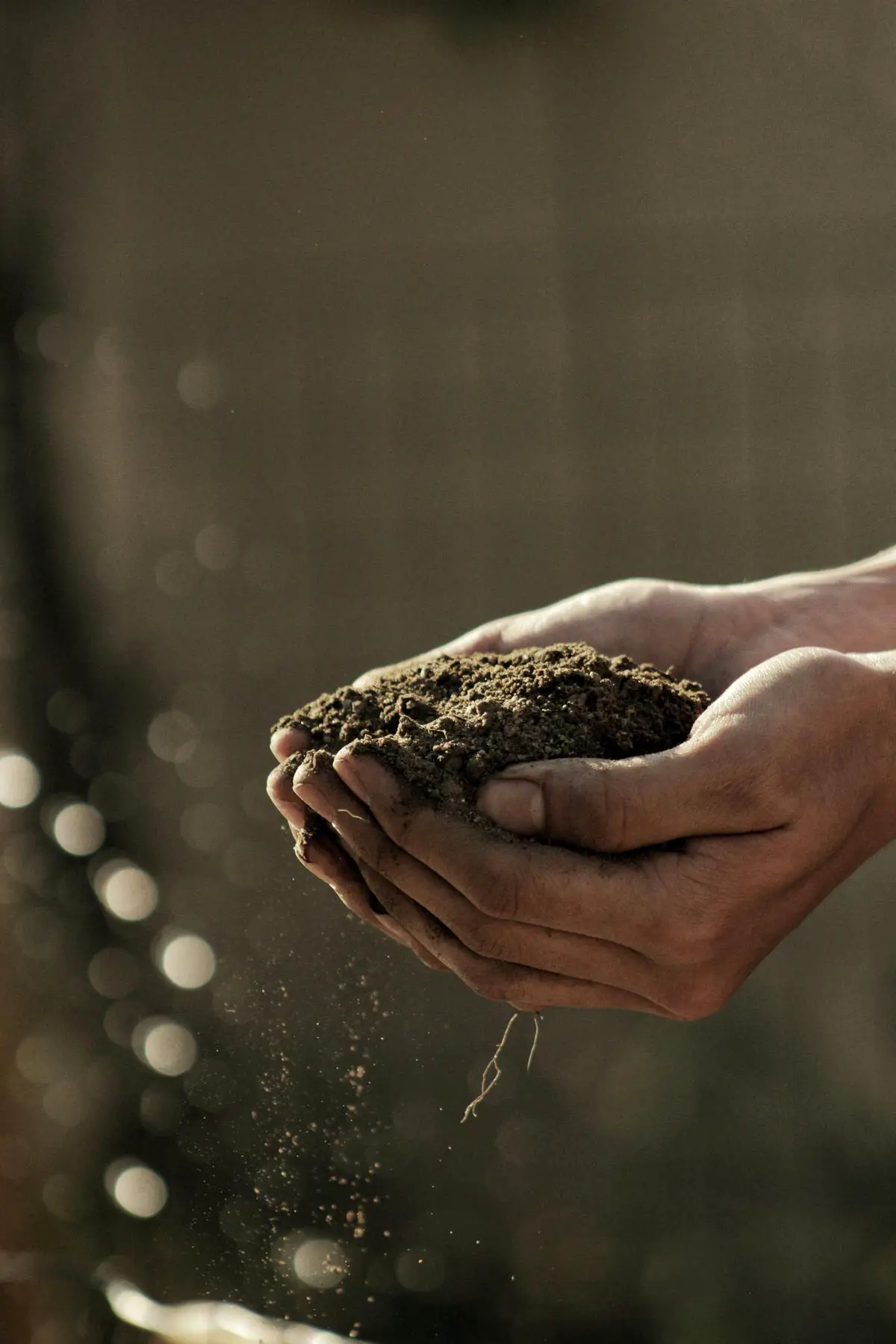
Photo by gabrielj_photography on Unsplash
Pest and Disease Control in Organic Kale Farming
When addressing the challenge of managing pests and diseases in organic kale farming, one must consider an array of strategies beyond soil management. These strategies are critical for yielding robust plant health without resorting to synthetic pesticides and herbicides, which organic standards strictly prohibit.
One fundamental approach involves selecting kale varieties that are resistant to local pests and diseases. Cultivar selection can markedly reduce the vulnerability of the crop to infestations. In parallel, maintaining biodiversity within the ecosystem proves essential. Incorporating a diversity of plant species can disrupt the lifecycle of pests and attract beneficial insects that serve as natural predators.
Moreover, the implementation of physical barriers, such as floating row covers, can effectively shield plants from insects while also creating a microclimate that can enhance growth. This method, along with the judicious use of organic-approved insecticidal soaps and neem oil, can provide an additional layer of defense.
The scheduling of planting and harvesting can also influence pest management. For example, early or late planting can evade peak periods of certain pest populations. Monitoring the kale crops vigilantly, adopting timely interventions, and maintaining robust plants are primary defense mechanisms against pest proliferation.
Furthermore, fostering healthy populations of beneficial insects like ladybugs, lacewings, and predatory wasps through habitat creation or augmentation is another vital tactic. These allies can curtail pest populations naturally.
For disease management, it is paramount to ensure proper air circulation among plants to minimize fungal growth. Techniques such as pruning or strategic plant-spacing can facilitate this. Organic fungicides, such as those based on copper and sulfur, may be used sparingly and as a last resort due to their potential environmental impact.
In the context of irrigation, the prudent use of water can decrease disease incidence. Drip irrigation, for example, directs water to plant roots and minimizes leaf wetness, thus reducing the risk of leaf-borne pathogens.
Lastly, the prompt removal and proper disposal of infected plant material from the field are crucial to prevent the spread of disease. Composting of diseased material should be approached with caution as pathogens can survive if compost temperatures are not sufficiently high to eradicate them.
Each of these methods converges towards a holistic plan for managing pests and diseases in organic kale crops. Such a multifaceted and integrated pest management (IPM) strategy adheres to organic farming’s overarching ethos of ecological balance and sustainability.
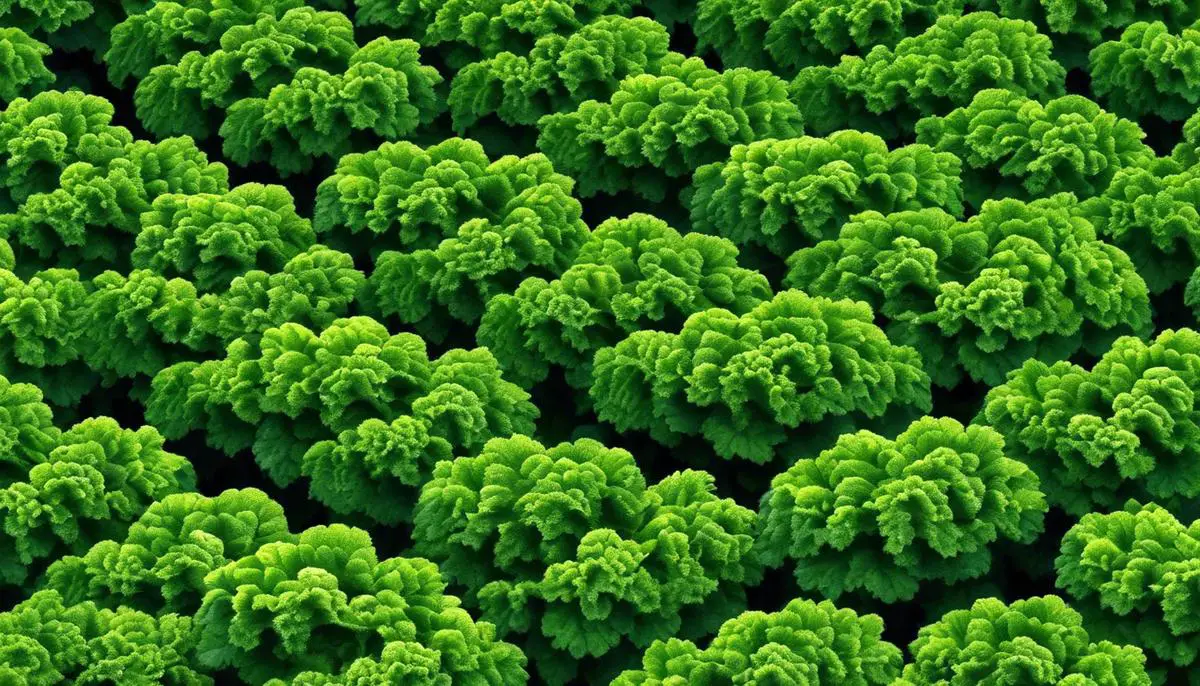
Harvesting and Post-Harvest Handling of Organic Kale
The intrinsic quality of organic kale post-harvest is contingent on a meticulous harvesting process and stringent post-harvest handling practices. To maintain the integrity of kale’s quality, each step must be methodically executed.
Harvesting organic kale should coincide with optimal maturity. Success hinges on the discernment of kale’s peak physiological state, characterized by firm, deep green leaves and robustness. Over-mature leaves tend to be tough and diminish in nutritional value. Conversely, immature leaves may lack full flavor development and the desired texture. The appropriate harvest time also mitigates excess field heat absorption, thus preserving the kale’s internal cell structure.
The method of cutting kale is equally pertinent. Harvesting should be undertaken with sanitized, sharp tools to prevent bruising and minimize microbial infiltration. Gentle handling is paramount to avert mechanical injuries that precipitate deterioration. Leaves must be detached with care, ensuring the preservation of the plant’s core for future growth if sequential harvesting is practiced.
Prompt cooling after harvest is crucial to forestall the degradation of quality. A reduction in kale’s temperature attenuates respiration rates, delaying senescence and the depletion of sugars. Pre-cooling, achieved through techniques like hydro-cooling or vacuum cooling, rapidly removes field heat, locking in freshness and extending shelf life.
The cleanliness of the post-harvest environment warrants strict attention. Facilities and containers must be sanitized regularly to impede microbial contamination. Clean water sources are essential for washing the kale. Although washing can remove surface contaminants, bear in mind that excess moisture fosters microbial growth, thus drying steps are indispensable. Salad spinners or gentle air-blowing equipment can be utilized to wick away moisture without harming the tender leaves.
Storage of organic kale requires precise temperature and humidity control. An environment with temperatures ranging from 0°C to 1°C (32°F to 34°F) and relative humidity levels between 95-100% is ideal. This preserves freshness and mitigates water loss. Ensuring proper air circulation within storage facilities also deters ethylene accumulation, which may hasten spoilage.
Transportation follows suit under similar conditions. Refrigerated transit mechanisms are integral in upholding the low temperature and high humidity regime.
Finally, shelf-life management should invoke a ‘first-in, first-out’ inventory practice. Quick turnover is critical to offer consumers the highest quality organic kale. Merchandising should accentuate the kale’s freshness, displaying the lush, vibrant greens in a manner that invites consumers to experience the tangible results of sustainable agriculture and attentive post-harvest care.
In summary, the post-harvest handling of organic kale is a delicate task that demands astute vigilance at every stage – from precise harvesting to careful cooling, conscientious cleaning, meticulous moisture management, and rigorous storage and transportation conditions – to sustain its desirable characteristics and nourishing qualities.
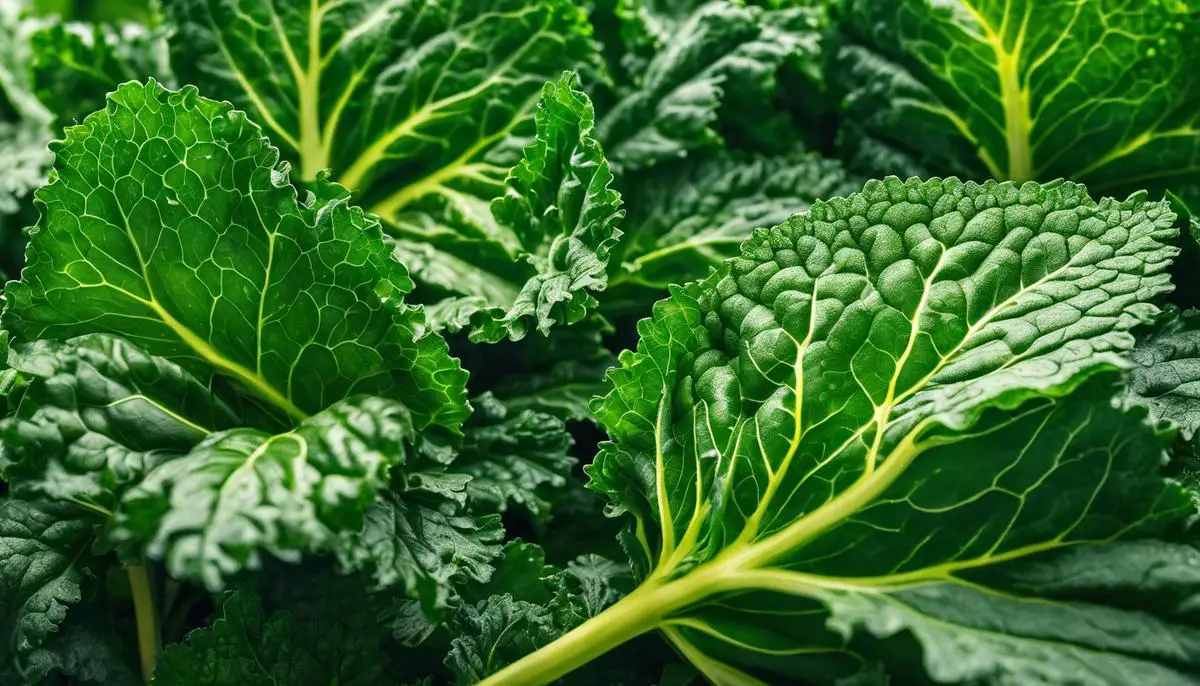
Certification and Marketing of Organic Kale
In the context of agricultural commodities, the certification of organic products serves as a pivotal element in both the marketing strategy and sales performance for crops such as kale.
Certification, particularly in the organic food industry, involves strict compliance with agricultural standards that eschew synthetic inputs and embrace holistic farm management.
When it comes to organic kale, certification impacts the brand’s trustworthiness, market access, and consumer perception, consequently affecting its marketability and financial success.
Certified organic kale carries with it a third-party verification of adherence to organic farming principles, which often commands higher price points due to the perceived quality and ethical production methods.
This certification becomes a seal of approval for health-conscious and environmentally aware consumers. In the case of organic kale, it assures potential buyers of the absence of genetically modified organisms (GMOs), synthetic pesticides, and fertilizers from its cultivation.
The marketing of organic kale is substantially enhanced by certification. It allows producers to label and promote their kale as certified organic, distinguishing it from conventional counterparts and also other uncertified organic produce. Such labeling not only aids in building brand credibility but also empowers consumers to make informed decisions aligned with their personal values concerning health and sustainability.
Furthermore, certified organic kale often gains preferential access to niche markets, namely, organic specialty stores and farmers’ markets, which generally cater to a segment of the population willing to spend more for products they feel are better for their health and for the environment. This preferential market access extends to the realm of online shopping platforms and organic food delivery services, which have seen an uptick in popularity.
In terms of sales, the consumer appeal of certification contributes to a premium pricing strategy. Studies have demonstrated that consumers are inclined to pay more for organic products due to their perceived natural and uncontaminated state. This premium translates into increased revenue for growers of organic kale, which can be vital in offsetting the typically higher production costs associated with organic farming practices.
The role of certification extends beyond initial sales to foster loyalty and repeat purchases among consumers who prioritize organic products in their diets. The cycle of trust generated by certification leads to the propagation of a brand narrative centered on health, quality, and environmental stewardship. Regularly updating certification and ensuring transparency in farming practices maintains this trust and encourages long-term customer relationships.
An important caveat is the ongoing need for consumer education to reinforce why certified organic kale is worth the additional expense. Effective marketing campaigns often include information on how organic farming supports biodiversity, reduces environmental impact, and avoids the use of potentially harmful chemicals.
In conclusion, certification is indisputably a cornerstone in marketing and sales of organic kale products. It steers consumer perception, justifies premium pricing, facilitates market access, and fosters brand loyalty – each a fundamental component in the commercial viability of organic kale. The ever-increasing demand for organic produce buttresses the need for growers to prioritize and sustain certification, ensuring the continuous availability of high-quality, organically grown kale for an expanding market that values both personal and planetary health.
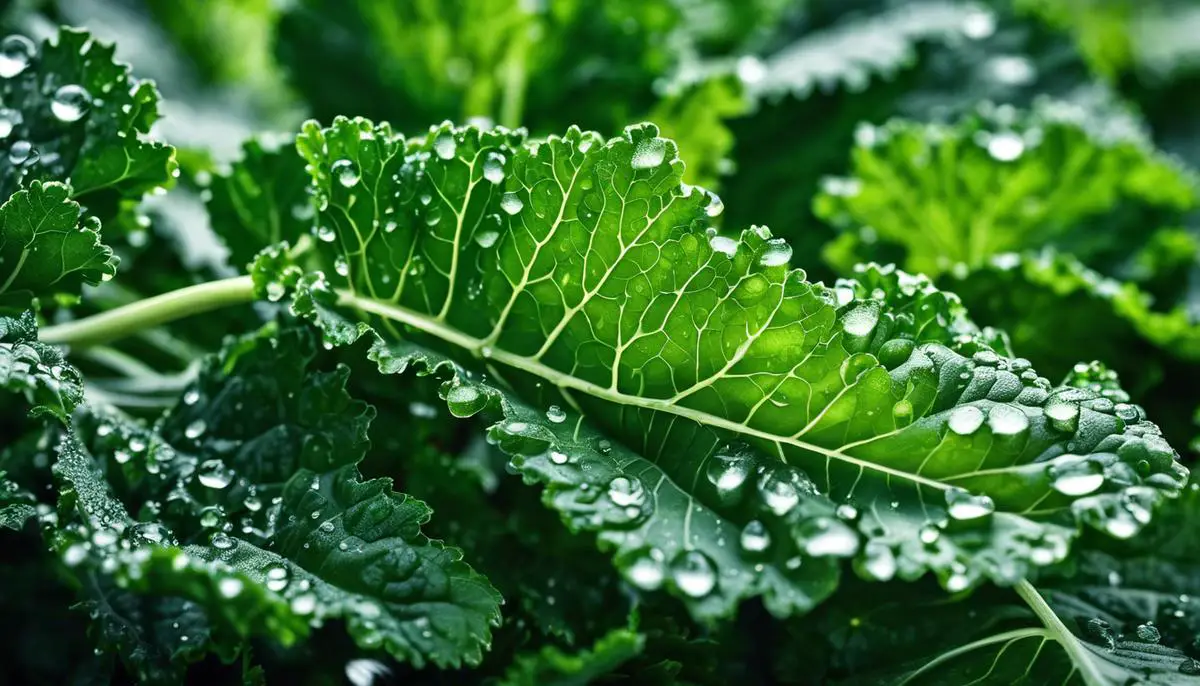
As we have journeyed through the intricacies of growing organic kale, it is clear that this endeavor is much more than simple cultivation. It is a commitment to ecological stewardship and a testament to the delicate balance between nature and nurture. The dedication required to maintain soil fertility, control pests and diseases naturally, handle crops post-harvest, and navigate the certification and marketing landscape speaks to the complexity and reward of organic farming. With deeper knowledge and understanding, growers and consumers together can perpetuate the responsible production and consumption of organic kale, securing its place as a pivotal crop in not just our diets, but our dedication to a greener, more sustainable future.

